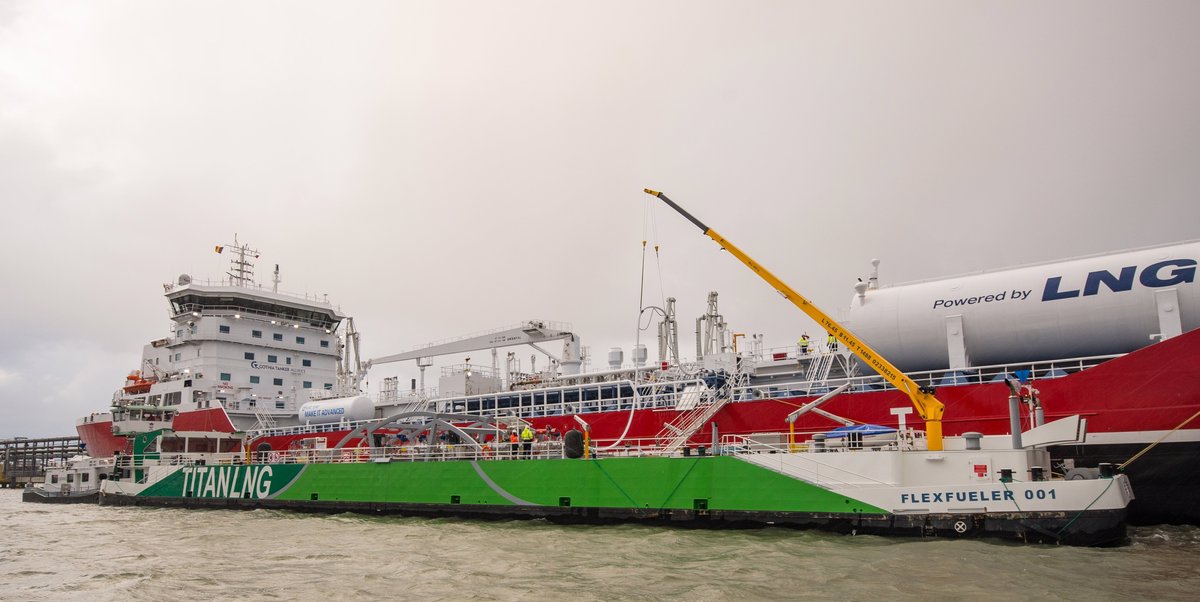The Week in Alternative Fuels
Here are some key developments in alternative bunker fuels from the past week.

PHOTO: Titan’s LNG bunker barge Flexfueler 001. Titan
LNG has really led the nascent transition away from oil-based marine fuels to date. The number of ships capable of running on LNG globally now count 355 and this figure is set to more than double to 870 by 2028, DNV data shows. That is more than three times more than for all other alternative fuel types combined.
A host of shipowners evidently consider LNG to be the best option to decarbonise ship emissions today. Others have questioned its green credentials, pointing to its limited carbon-cutting potential and methane slip as cause for concern.
A potential pathway to rein in these emissions is to produce the methane molecules in LNG in a different way.
Dutch LNG bunker supplier Titan has embarked on a project to build the world’s biggest biomethane liquefaction plant in Amsterdam. Titan’s Roel Engels and Nicolas Ganas spoke to ENGINE and shared some insights into what it takes to get this massive plant up and running, to source biogas as a feedstock, and where future shipping demand will come from.
Renewable methanol also featured in the news this week. The Methanol Institute now predicts that renewable methanol production will reach 8 million mt/year by 2027. And Danish company European Energy announced plans to build a large-scale e-methanol plant, with half of its production capacity earmarked for Danish shipping giant Maersk.
The US unveiled a roadmap to decarbonise its maritime sector by 2050. It advocates using biofuels, biofuel blends, ammonia, hydrogen and methanol to trim greenhouse gas emissions and reduce the sector's dependency on conventional fossil fuels.
However, to meet rising demands for renewable marine fuels it is necessary to scale up green energy infrastructure. This week, nuclear energy came to the forefront as Seaborg Technologies outlined how its fourth-generation nuclear reactor will be a game-changer for producing green hydrogen and why we should put aside the stigma surrounding nuclear power.
By Konica Bhatt
Here is our selection of five top alternative fuels stories from this week:
Alternative Fuels Part 4: Decentralised decarbonisation with bioLNG
INTERVIEW: Seaborg Technologies on harnessing nuclear energy to power shipping
Renewable methanol production to reach 8 million mt/year by 2027 - Methanol Institute
European Energy building e-methanol plant to fuel the marine sector – Methanol Institute





